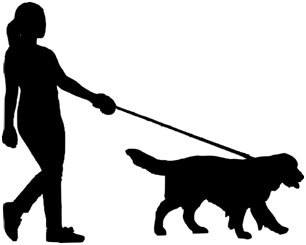Picture this: summertime has arrived and that can only mean one thing. Beach days, barbecues, and long walks with your furry friend. It’s hot outside and you want to get out of the house so you grab the leash and start toward the front door. You glance at the clock on the wall and realize it’s the middle of the day – the temperature outside is at a high. You look down at your furry friend as your hand pauses on the doorknob.
Now Let’s Talk Hot Weather Risks
Summer is here, and so is the heat! That means easy days lounging by the pool, but it also means more risks for your pet. There are a few significant risks your pet faces when the days become hotter and the temperature rises. Burned paws, heatstroke, and dehydration are the most common. You’re likely aware of all of these, but maybe not just how much of a potential danger they pose during hotter months.

Burned Paws
Have you ever walked across the pavement on a hot day and had to sprint like you’ve never sprinted before because it burned your feet? When it’s extra hot outside, the pavement can burn and blister the pads of your pet’s feet and cause them immense pain. If it’s 77° outside, asphalt can be up to 125° in direct sunlight. To see if the street temperature is safe, put the back of your hand against the pavement and if you can’t keep it there for five seconds, it’s too hot for your pet. If taking them out is necessary, use dog booties or dog paw wax to help keep the sensitive pads of their feet safe. You know your pet the best. If you think they’re uncomfortable or in pain, bring them inside immediately. Tricks aside, the best rule of thumb is that if it’s too hot for you, it’s too hot for them.

Heatstroke
Often caused by human error, heatstroke causes your pet’s body temperature to rise, which can lead to organ failure. The most susceptible to heatstroke are those that are elderly, overweight, or those with heart or lung disease. You’ve probably heard stories on the news of people leaving their pets in a hot car. But what you may not know is just how dangerous that situation is. If it’s 70° outside and the sign is shining, the temperature inside the car will reach 104° within just thirty minutes. After an hour, it can reach 113°. Having the window down does little to nothing to ease the temperature inside the car.
Though not sensationalized like being left in a hot car, being outside, even in your backyard or on long walks can be just as deadly if it’s hot enough. But heatstroke can be avoided by following these easy steps. Limit exercise on hot days – the best time to be outside is either early morning or late evening when the temperature drops. Pets with white-colored ears need extra precautionary care because they are more susceptible to skin cancer; pets with shorter snouts are more susceptible to breathing problems. If being out during the day is unavoidable, have your pet walk on grass if at all possible. Providing shade is key – tree shade and tarps are optimal because they don’t obstruct airflow. Dog houses are actually a bad idea during the summer because their closed spaces obstruct airflow, effectively making things worse. If it’s extra hot, add ice cubes to your pet’s water bowl. You can make DIY popsicles with peanut butter, or provide cooling mats or bandanas to help keep your pet comfortable. It’s important to note that you shouldn’t shave your dog. You’d think doing so would keep them cool, but it actually has the opposite effect. The layers of their coats protect them from sunburn as well as overheating. It’s also a good idea to brush your cat more often than normal as it can prevent problems caused by excessive heat.
Always make sure your pet has access to fresh, cool water so they don’t become dehydrated.

Dehydration
Without continual access to fresh water, your pet is at risk to become dehydrated. When this happens, blood becomes very thick because the heart is forced to work extra hard in order to pump enough blood to organs throughout the body. Left untreated, dehydration can lead to circulatory shock and organ failure.
If you think your pet is suffering from any of these things, bring them in immediately. Their well-being is the priority, both yours and ours.
Now picture this: you take your hand off the doorknob and look to your pet. “Let’s stay inside today”, you say as you hang the leash back up. Your furry friend’s tail wags as you turn together and walk back into the depths of the air conditioning, safe for another day.
